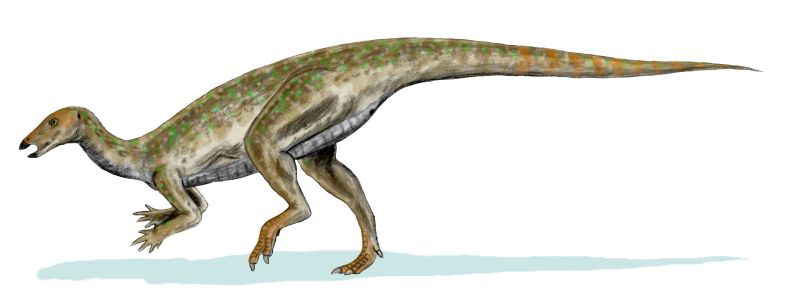Euoplocephalus, meaning “well-armored head,” stands as one of paleontology’s most significant discoveries in the study of armored dinosaurs. This remarkable Late Cretaceous thyreophoran has provided scientists with unprecedented insights into ankylosaur anatomy, behavior, and evolution due to the extraordinary completeness of recovered specimens. Unlike many dinosaur species known only from fragmentary remains, Euoplocephalus fossils include nearly complete skeletons with preserved armor, internal structures, and even soft tissue impressions. This remarkable preservation has allowed paleontologists to reconstruct this living tank with exceptional detail, making it a cornerstone for understanding how these heavily armored herbivores lived and thrived in their ancient ecosystems.
Discovery and Naming: The Journey to Recognition
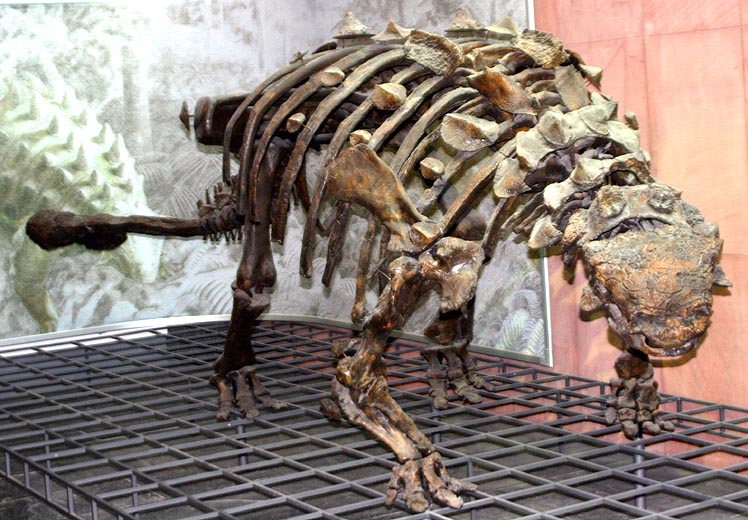
The first Euoplocephalus specimen was discovered in the Dinosaur Park Formation of Alberta, Canada, and described by paleontologist Lawrence Lambe in 1902. Initially named Stereocephalus, this name was later changed to Euoplocephalus when Lambe discovered it was already in use for an insect genus. The name Euoplocephalus tutus, meaning “well-armored head” in Greek, perfectly captures the dinosaur’s most distinctive feature – its incredibly fortified skull and body. Over the decades following its discovery, numerous additional specimens were unearthed from the rich fossil beds of Alberta and Montana, gradually revealing more details about this remarkable creature. The taxonomic history of Euoplocephalus has been complex, with several species once attributed to it later being reclassified as separate genera, including Anodontosaurus and Scolosaurus, reflecting the ongoing refinement of our understanding of ankylosaur diversity.
Age and Habitat: Life in the Late Cretaceous
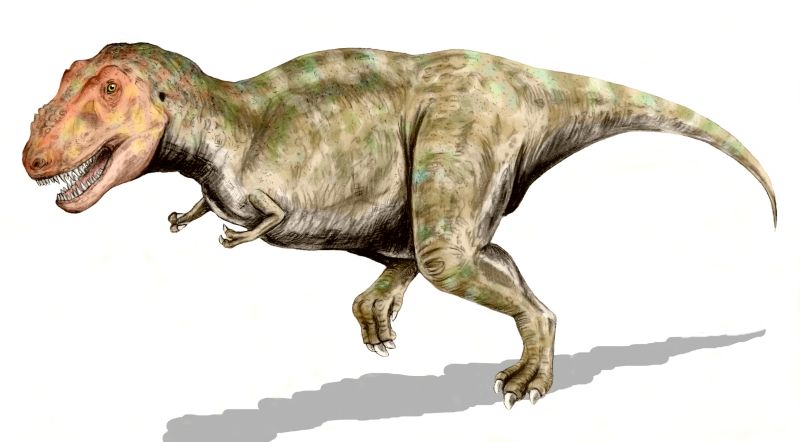
Euoplocephalus inhabited western North America during the Late Cretaceous period, specifically from about 76 to 70 million years ago during the Campanian stage. During this time, the region consisted of a coastal plain adjacent to the Western Interior Seaway, an inland sea that divided North America into eastern and western landmasses. The environment was predominantly subtropical, characterized by river systems, floodplains, and coastal deltas that supported diverse plant communities including coniferous forests, cycads, ferns, and flowering plants. Euoplocephalus shared this lush ecosystem with numerous other dinosaur species, including famous contemporaries such as Tyrannosaurus rex, Triceratops, and various hadrosaurs. Fossil evidence indicates that these armored dinosaurs preferred inland habitats, possibly staying close to waterways where vegetation was abundant and the terrain provided opportunities for protection and concealment despite their formidable armor.
Physical Dimensions: The Tank-Like Build
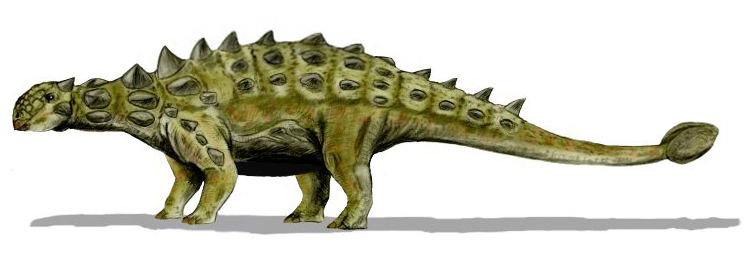
Euoplocephalus was a massive, heavily-built dinosaur that exemplified the tank-like proportions characteristic of ankylosaurs. Adult specimens typically measured between 5 to 6 meters (16 to 20 feet) in length, stood approximately 1.8 meters (6 feet) tall at the shoulder, and weighed an estimated 2 to 3 tons. Its broad, low-slung body was supported by four stout, column-like limbs that splayed slightly outward, creating a stable base to support its immense weight. The front limbs were shorter than the hind limbs, giving the body a slight slope from rear to front. Euoplocephalus possessed a relatively small head compared to its body, with a proportionally short neck that limited mobility but provided protection against predators. Despite its enormous weight and apparent clumsiness, skeletal analysis suggests that Euoplocephalus could achieve reasonable mobility, possibly managing speeds of up to 8-10 kilometers per hour (5-6 mph) when necessary, though it likely moved much more slowly during normal activities.
Cranial Armor: The Living Fortress
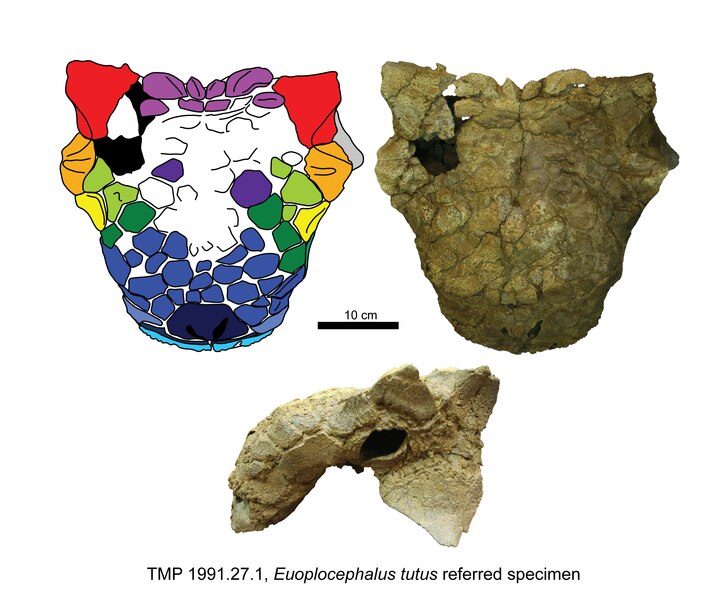
The skull of Euoplocephalus represents one of the most heavily armored cranial structures of any known dinosaur, forming an impenetrable protective case around the brain and sensory organs. The most striking feature was the complex arrangement of flat, polygonal bony plates called osteoderms that fused to the skull surface, creating a solid protective shell. These plates varied in size and shape across different regions of the skull, forming intricate patterns that likely had species-specific characteristics useful for identification and possibly display. In addition to the armored surface, the skull possessed two distinctive pyramid-shaped horns that projected from the rear corners, adding another defensive element. Even the cheeks were protected by large triangular horns that jutted outward, while smaller horns lined the back of the skull, creating a formidable appearance from every angle. The nasal passages were complex and convoluted, winding through the thick bone in a way that suggests they may have helped condition inhaled air, potentially serving to cool the animal’s blood or enhance its sense of smell.
Body Armor: A Mosaic of Defense
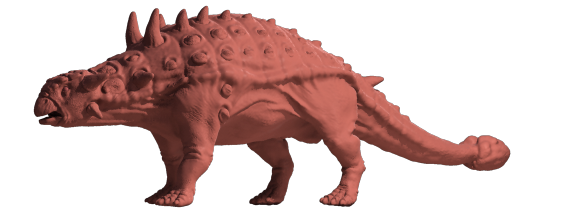
The body armor of Euoplocephalus consisted of hundreds of bony plates embedded in the skin, creating a continuous protective shell from neck to tail. These osteoderms varied dramatically in size, shape, and thickness depending on their location on the body, forming a sophisticated mosaic of protection. The largest plates, some exceeding 30 centimeters (12 inches) in diameter, covered the vulnerable shoulder and hip regions, while smaller, more uniform plates protected the flanks and limbs. Between the larger plates, numerous small ossicles (tiny bones) filled the gaps, creating a flexible yet impenetrable barrier against predator attacks. Particularly remarkable were the half-ring structures that protected the neck, consisting of large, keeled plates fused to an underlying band of bone that allowed limited mobility while maintaining protection of this vulnerable area. The preservation quality of Euoplocephalus specimens has allowed paleontologists to reconstruct this armor arrangement with exceptional detail, revealing a defensive system far more sophisticated than previously imagined, with specific reinforcement of the most vulnerable body regions.
The Legendary Tail Club: Nature’s Perfect Weapon
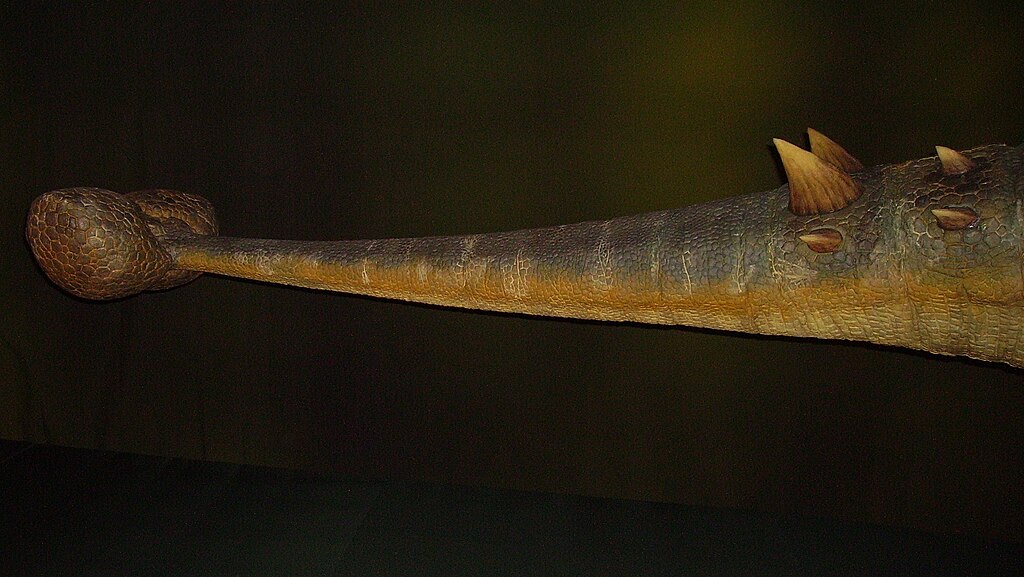
Perhaps the most iconic feature of Euoplocephalus was its formidable tail club, a specialized weapon that represents one of the most effective defensive adaptations in dinosaur evolution. The club consisted of a series of modified vertebrae at the end of the tail that became increasingly rigid and fused together, culminating in a large, solid knob composed of two major osteoderms. In Euoplocephalus, this terminal club typically measured about 40 centimeters (16 inches) across, creating a formidable bludgeon that could deliver devastating blows to predators. The tail itself was stiffened by interlocking processes on the vertebrae and encased in overlapping bony plates, essentially transforming the entire tail into a rigid handle for the club. Biomechanical studies indicate that Euoplocephalus could swing this weapon with remarkable force, potentially generating impact energies sufficient to break bones or damage the legs of even large tyrannosaur predators. Recent research utilizing CT scanning and computer modeling suggests the tail muscles could generate striking forces exceeding 4,800 newtons, more than enough to shatter bone on impact and serve as a potent deterrent to predators.
Sensory Adaptations: Navigating the Cretaceous World

Despite its heavily armored head, Euoplocephalus possessed sophisticated sensory adaptations that allowed it to effectively perceive its environment. CT scans of well-preserved skulls have revealed an expanded olfactory region, suggesting a heightened sense of smell that would have been valuable for detecting both food sources and potential predators. The eyes were relatively small but well-protected in recessed sockets, likely providing adequate vision for an animal that didn’t rely primarily on visual acuity. Perhaps most fascinating are the complex nasal passages that twisted through the skull in elaborate pathways before connecting to the throat, potentially serving multiple functions beyond simple respiration. These convoluted airways may have helped regulate brain temperature by cooling inhaled air, enhanced the sense of smell by increasing the surface area of olfactory tissue, or possibly even produced distinctive sounds for communication. The inner ear structure, reconstructed from exceptionally preserved specimens, indicates Euoplocephalus had good hearing capabilities particularly sensitive to low-frequency sounds, which would have been advantageous for detecting the footfalls of approaching predators or communication calls from other ankylosaurs across distances.
Diet and Feeding Behavior: The Low-Browse Herbivore
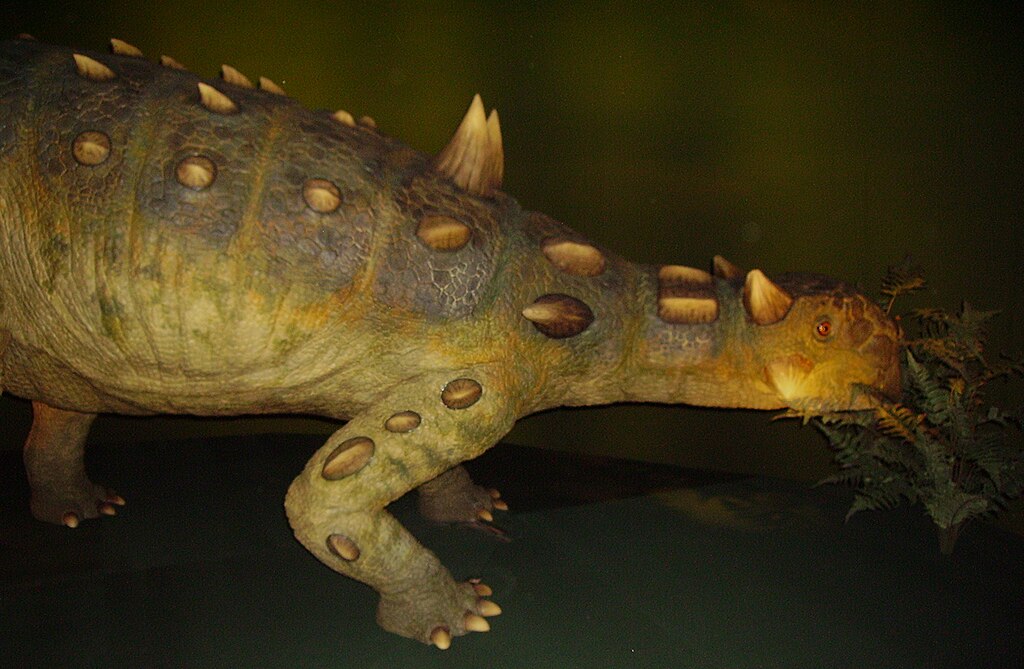
Euoplocephalus was a specialized herbivore with adaptations for processing tough plant material available close to the ground. Its small, leaf-shaped teeth were ideal for stripping vegetation rather than chewing, suggesting a feeding strategy that relied heavily on gut fermentation to break down plant matter. The narrow, beaked snout allowed for selective feeding on specific plant parts, while the relatively weak bite force compared to some other herbivorous dinosaurs indicates it likely avoided the toughest vegetation. Analysis of preserved stomach contents and coprolites (fossilized feces) associated with ankylosaurs has revealed their diet consisted primarily of ferns, cycads, conifers, and possibly early flowering plants, with a preference for softer, more nutritious plant materials. Euoplocephalus likely fed by moving slowly through its environment, using its narrow beak to pluck selected vegetation from heights no more than a meter off the ground. The positioning of the head and the structure of the neck vertebrae made it physically impossible for these dinosaurs to raise their heads to browse on taller vegetation, firmly establishing them as low-level feeders within their ecosystem.
Social Behavior: Evidence of Group Living
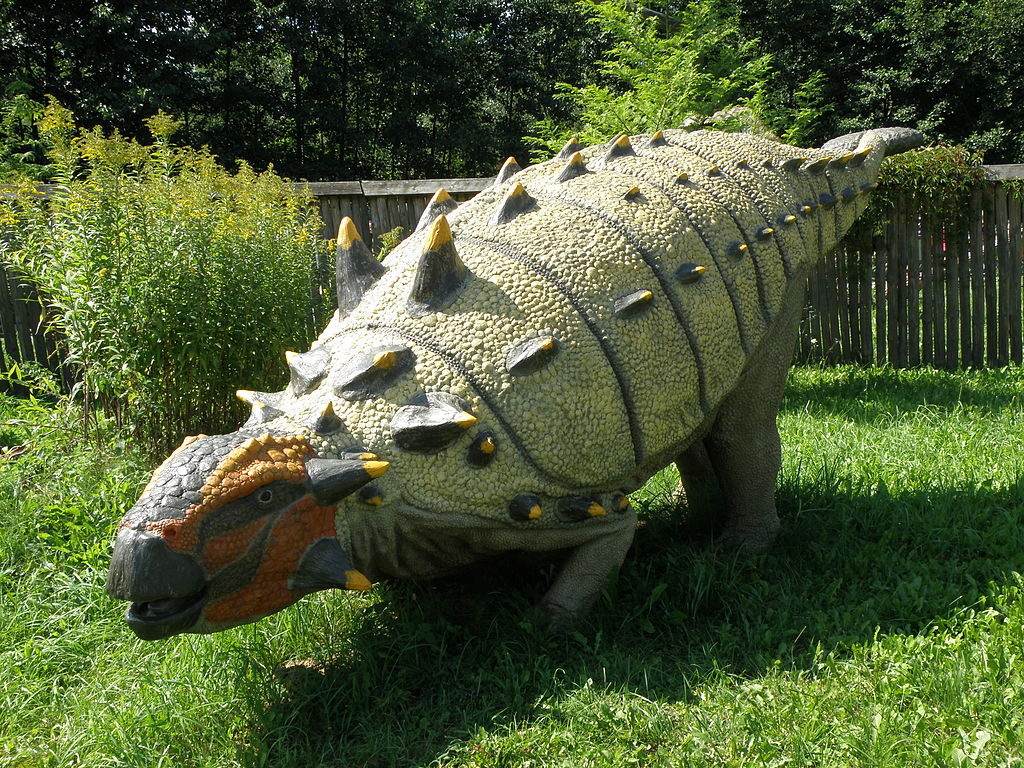
While direct evidence of social behavior is challenging to establish from the fossil record, multiple lines of evidence suggest Euoplocephalus may have exhibited some degree of social living. The discovery of several individuals preserved in close proximity at certain fossil sites hints at possible group associations, though taphonomic processes (how organisms become fossils) could also explain these aggregations. More compelling is the presence of potential sexual dimorphism in armor patterns and club sizes, suggesting complex social interactions may have occurred during breeding seasons. The elaborate nasal passages may have produced resonant vocalizations useful for communication within groups, and the limited mobility of these heavily armored dinosaurs would have made group defense advantageous against predators. Some fossil trackways attributed to ankylosaurs show multiple individuals moving in the same direction, potentially indicating coordinated movement. While Euoplocephalus likely didn’t form the large, complex herds seen in some herbivorous dinosaurs, the evidence collectively suggests they may have lived in loose social groupings, possibly traveling together for increased protection and gathering during breeding seasons for social interactions.
Growth and Development: From Hatchling to Armored Adult
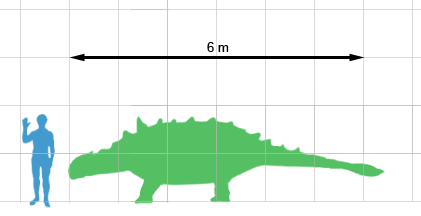
The growth pattern of Euoplocephalus represents one of the most dramatic transformations known among dinosaurs, with individuals developing from relatively vulnerable hatchlings to virtually impregnable adults. Rare juvenile specimens indicate that young Euoplocephalus possessed a basic armor pattern that became increasingly developed and complex as they matured. The armor began as small, isolated osteoderms that gradually expanded, fused, and developed more pronounced features throughout growth. Histological studies of bone microstructure from various growth stages reveal that Euoplocephalus experienced rapid growth during early and middle years, slowing considerably as they approached adult size. The tail club developed relatively late in maturation, with juvenile specimens showing unfused tail vertebrae and only rudimentary terminal osteoderms that would later develop into the massive club. This developmental pattern suggests young ankylosaurs may have relied more on concealment and fleeing from predators, while adults could depend on their formidable armor and active defense. Growth ring analysis indicates these dinosaurs typically reached full size after approximately 15-20 years, with a potential lifespan extending several decades beyond maturity.
Paleobiological Insights: Unique Physiological Adaptations
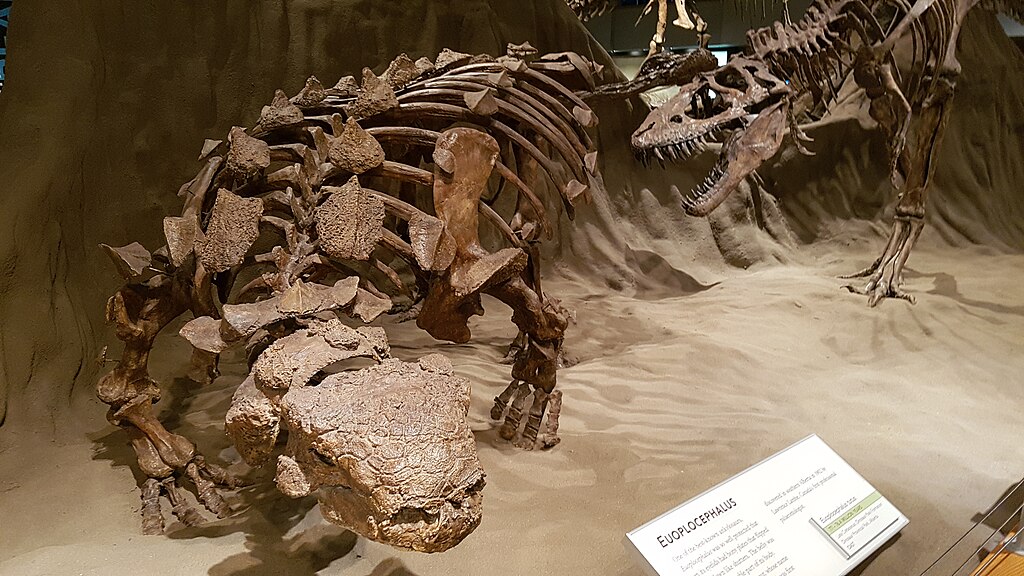
The exceptional preservation of numerous Euoplocephalus specimens has provided researchers with unprecedented insights into ankylosaur physiology and internal biology. CT scanning has revealed remarkable adaptations in the respiratory system, with extensive air sacs similar to those in birds extending into the vertebrae and even some bones of the limbs, suggesting a highly efficient breathing apparatus despite the constraints imposed by heavy armor. The brain endocast (a natural cast of the brain cavity) shows an expanded cerebellum relative to other dinosaurs of similar size, indicating enhanced motor control that would have been crucial for effectively wielding the tail club in defense. Analysis of preserved stomach regions has revealed gastroliths (stomach stones) that would have aided in grinding plant material in the absence of complex chewing teeth, similar to modern birds but scaled to massive proportions. Perhaps most fascinating is evidence suggesting these heavily armored dinosaurs may have been capable of thermoregulation, with the extensive network of blood vessels running through the armor potentially functioning as a thermal radiator, helping the animal shed excess heat during activity or absorb warmth during cooler periods.
Scientific Significance: Why Euoplocephalus Matters
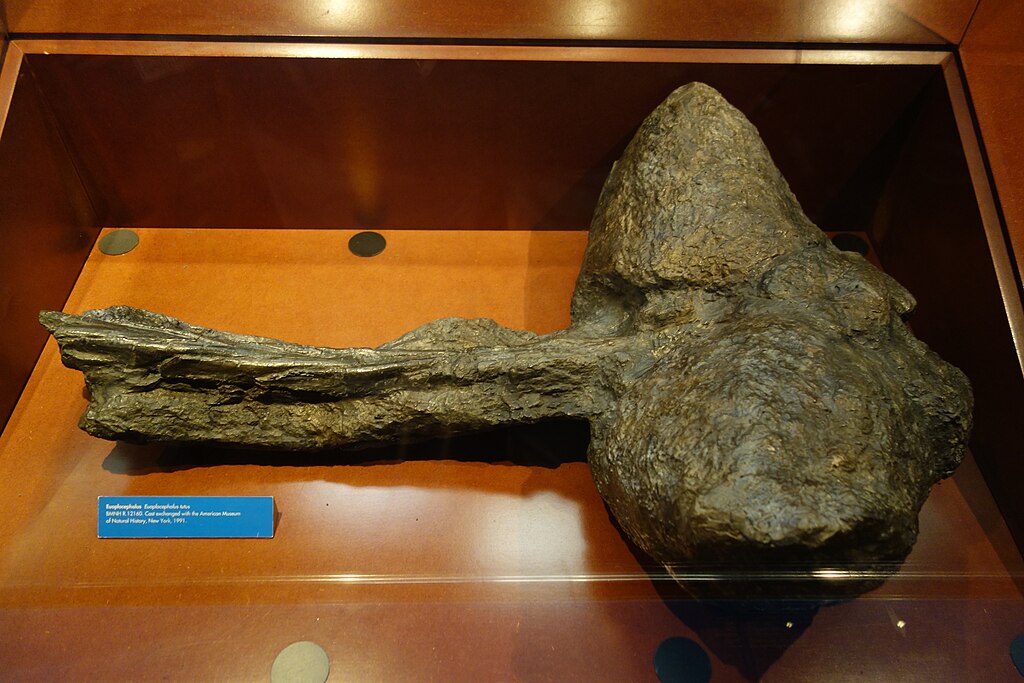
The scientific importance of Euoplocephalus extends far beyond its impressive appearance, making it a cornerstone species in understanding dinosaur evolution and paleobiology. As one of the most completely known ankylosaurs, it serves as a reference point for interpreting more fragmentary remains of related species, allowing paleontologists to make informed inferences about missing elements in less complete specimens. The numerous well-preserved specimens span different growth stages, enabling researchers to study ontogenetic development in armored dinosaurs with unprecedented detail. Euoplocephalus has been crucial in understanding the biomechanics of defensive adaptations in dinosaurs, with studies of its tail club mechanics providing insights into how passive defense evolved into active weapons. The species has also proven valuable for studying paleoecology, as its abundance in certain formations helps establish population structures and distribution patterns within Late Cretaceous environments. Additionally, the exceptional preservation of armor arrangement in Euoplocephalus has revolutionized how museums and educational institutions reconstruct and display ankylosaurs, dramatically improving public understanding of these remarkable animals.
Popular Culture Impact: From Museums to Media

Euoplocephalus has cemented its place as one of the most recognizable dinosaurs in popular culture, featured prominently in museums, documentaries, films, and educational materials worldwide. Its distinctive appearance makes it a favorite subject for museum displays, with full skeletal mounts and life-sized reconstructions drawing crowds at institutions including the Royal Tyrrell Museum in Alberta and the American Museum of Natural History in New York. The dinosaur has featured in numerous documentaries, including BBC’s “Walking with Dinosaurs” and PBS’s “Nova,” typically portrayed as the ultimate symbol of prehistoric defense. In children’s media, Euoplocephalus often appears as the archetypal “tank dinosaur,” featured in books, toys, and educational programs that use its dramatic armor to capture young imaginations. Video games frequently include Euoplocephalus as a playable character or formidable obstacle, capitalizing on its combat-ready appearance and distinctive capabilities. Beyond entertainment, the species has become an important teaching tool in science education, used to demonstrate evolutionary adaptations, predator-prey relationships, and the diversity of dinosaur body plans in ways that resonate with students of all ages.
Conclusion

Euoplocephalus represents a remarkable evolutionary success story—a dinosaur so effectively armored that it survived for millions of years in ecosystems dominated by some of history’s most fearsome predators. The exceptional completeness of discovered specimens has transformed our understanding of ankylosaurs from simplified “living tanks” to sophisticated organisms with complex adaptations, behaviors, and ecological roles. As paleontological techniques continue to advance, Euoplocephalus specimens remain at the forefront of research, yielding new insights through technologies like CT scanning, isotope analysis, and computer modeling. This dinosaur stands as a testament to evolution’s capacity to produce extraordinary defensive specialization, while simultaneously demonstrating that beneath the impressive armor was a complex animal adapted to its environment in countless subtle ways beyond mere protection. The legacy of Euoplocephalus continues to grow with each new discovery, ensuring this remarkable dinosaur will remain a cornerstone of paleontological research and public fascination for generations to come.

